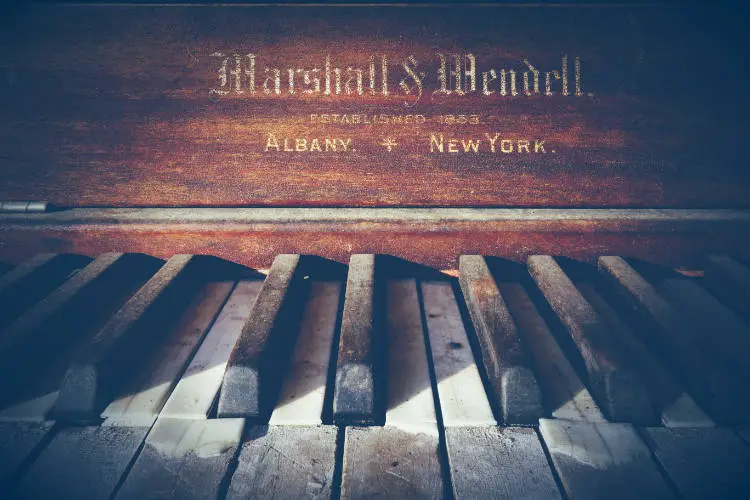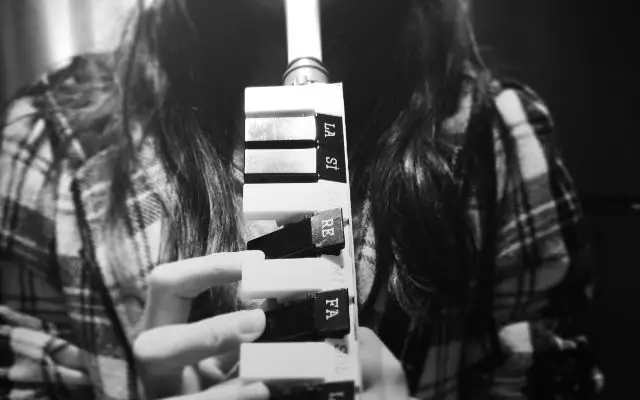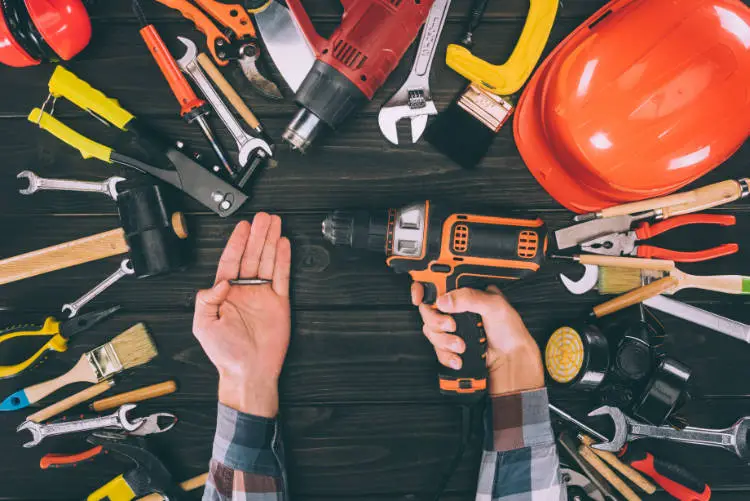Today, the melodica has become a unique voice in music styles as varied as jazz, reggae, and minimalist classic music. It’s also a staple in certain pockets of international music education, especially in countries such as Japan. How exactly did the melodica get to this point though? What is the history of melodica?
Melodica Beginnings
Free reed instruments have been around for millennia. They most likely stem from something similar to the mouth harp, which is simply a single reed attached to a frame. You can find free-reed instruments in cultures all over the world. Their sound is produced by the vibration of a reed when the player blows air. Over time, these instruments grew more complex into organs and bamboo pipes. They also grew larger and featured more notes to play.
The combination of two great ideas
Melodicas share their history with instruments like the accordion and the harmonica. They are very much wind instruments at heart. The brilliance is in the idea to connect a wind instrument with an easy to hold piano-style instrument. We had the “squeeze box” for some time before the melodica. And in the 1820s, the harmonica was invented. So, what was the spark that connected these two musical ideas?
Some of the articles on our site contain affiliate links. We're careful about what we review and recommend. As an Amazon Associate, we may earn something small from qualifying purchases. Thanks for the support!
It appears, at least in part, to have been music education that led to the development of the melodica as we know it today. It was developed as an easy to hold, easy to play instrument that a beginner could learn with. This idea was key to the melodica’s success later as well. In Asia, for instance, schools use them to fulfill the requirements of both a wind instrument and a keyboard instrument at the same time.
Tracing the melodica’s lineage
As mentioned above, there are many instruments that seem to have played a part in the evolution of the melodica. Here is a very brief look at what may have been the thread to the modern melodica.
By the beginning of the 19th century, the panharmonicon made its way to the US from Paris. Invented by Johann Mäzel, it was designed to mimic many other instruments, such as the clarinet, drum, bassoon, and
From pump organ to melodion
Before even the panharmonicon, however, it seems that at least the idea of free-reed instruments came originally from China and made its way through Russia. This could have been as early as the mid-1700s. This musical development led to what became known as the pump organ. And the pump organ blazed the way for the development of a myriad of other instruments such as the melodeon.
Word also has it that Abraham Prescott of Prescott Organ Company designed the melodeon after James H. Bazin’s lap organ, which became a stepping stone to the modern-day melodica.
Needs drive musical innovation
So much was going on in the development of musical instruments at that time that it becomes difficult to pin down exactly who influenced who. What we do know is that a player’s specific environment was crucial in their instrument choice.
For instance, most small churches at the time didn’t have the space or the funds for a huge pipe organ. So, they needed a good alternative. Pump organs became that alternative. And a small family who wanted to play music together might not have had the means for a piano or organ. They could, however, afford the cost and space of a small lap organ.
The needs of musicians often lead to amazing leaps in the development of musical instruments over time. As music education became more important to a greater number of families, more innovation was needed too.
Hohner, Borel, and the race to the first modern melodica
While it’s clear that the modern melodica was invented in the 1950s, there’s debate over the winner. Hohner, a German company producing primarily harmonicas, released their first melodica in 1958. However, its design featured buttons rather than piano keys.
Borel, an Italian company, produced its first version in 1958 as well. Their version featured the piano keyboard that we know as a typical melodica keyboard today. They also may have beaten Hohner on the timeline. Either way, we ended up with two great instruments and a new development in music.
The melodica in modern music
The melodica has seen highs and lows in popularity over the decades. In parts of Asia, such as Japan, the melodica has seen pretty steady popularity. As schools and parents continue to provide access to melodicas for their kids, a steady stream of melodica lovers is created there.
In other areas; however, the love of the melodica has been less steady. In the west, the popularity of the melodica took a dip between the 1980s or 1990s and relatively recently. Today, the melodica is seeing a resurgence in popularity in jazz, folk, and reggae. And to be honest, reggae was one of those genres that kept its fascination with the instrument from early on. This is in large part due to musicians like Augustus Pablo.
However, early on, its popularity grew after Steve Reich featured the melodica in his piece, Melodica in 1966. Since then, the instrument has been featured in many popular songs that have probably gone unnoticed. Bands like Oasis, Belle and Sebastian, New Order, Red Hot Chili Peppers, Joy Division, and The Beach Boys, along with so many others have used the instrument here and there throughout their careers. With newer bands playing it regularly, the melodica is slowly coming back into the spotlight.




